JAJSJ01D May 2020 – February 2023 TLV7031-Q1 , TLV7032-Q1 , TLV7034-Q1 , TLV7041-Q1 , TLV7042-Q1 , TLV7044-Q1
PRODUCTION DATA
- 1 特長
- 2 アプリケーション
- 3 概要
- 4 Revision History
- 5 Pin Configuration and Functions
-
6 Specifications
- 6.1 Absolute Maximum Ratings
- 6.2 ESD Ratings
- 6.3 Recommended Operating Conditions
- 6.4 Thermal Information (Single)
- 6.5 Thermal Information (Dual)
- 6.6 Thermal Information (Quad)
- 6.7 Electrical Characteristics
- 6.8 Switching Characteristics
- 6.9 Electrical Characteristics (Dual)
- 6.10 Switching Characteristics (Dual)
- 6.11 Electrical Characteristics (Quad)
- 6.12 Switching Characteristics (Quad)
- 6.13 Timing Diagrams
- 6.14 Typical Characteristics
- 7 Detailed Description
- 8 Application and Implementation
- 9 Power Supply Recommendations
- 10Layout
- 11Device and Documentation Support
- 12Mechanical, Packaging, and Orderable Information
パッケージ・オプション
メカニカル・データ(パッケージ|ピン)
サーマルパッド・メカニカル・データ
発注情報
6.14 Typical Characteristics
TA = 25°C, VCC = 5 V, VEE = 0 V, VCM = VCC/2, CL = 15 pF
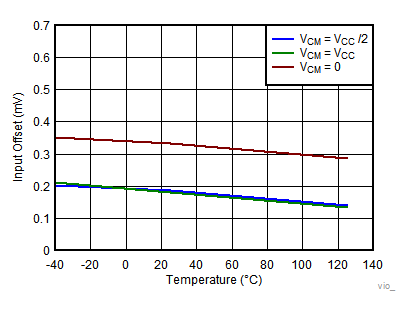
| VCC = 1.8 V |

| VCC = 5 V |
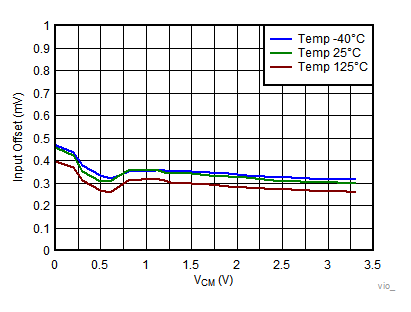
| VCC = 3.3 V |
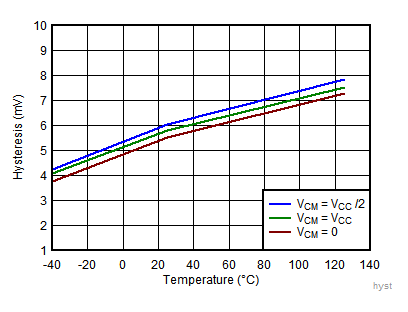
| VCC = 1.8 V to 5 V | TLV70x1 |
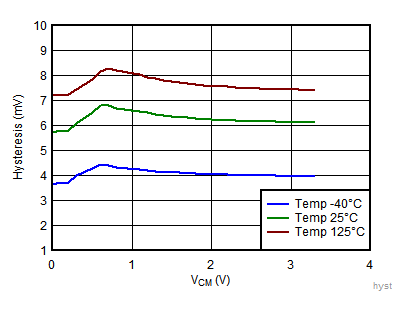
| VCC = 3.3 V | TLV70x1 |
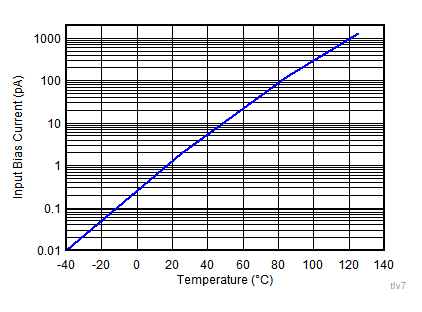
A.
Figure 6-13 Input Bias Current vs Temperature| VCC = 5 V |
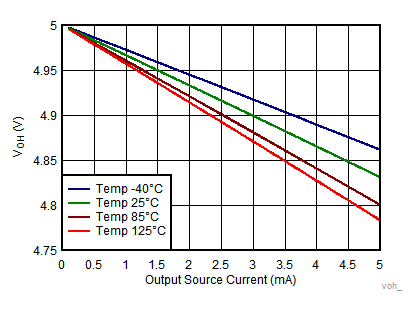
| VCC = 5 V | TLV703x |
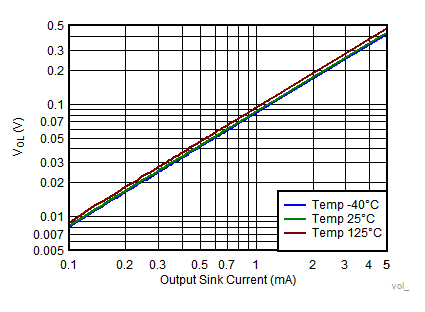
| VCC = 5 V |
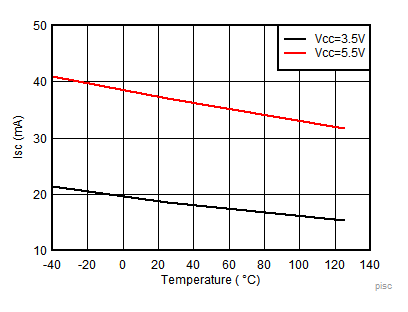
| VCM = VCC / 2 | TLV703x |
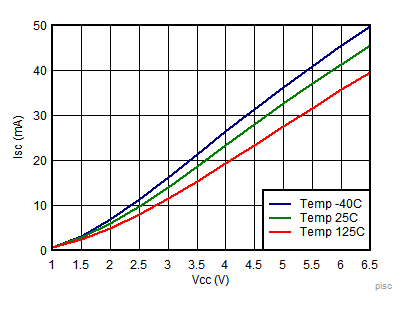
| VCM = VCC / 2 | TLV703x |
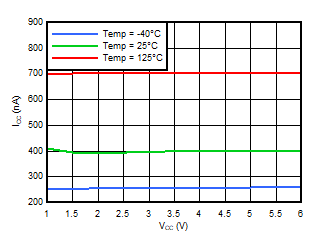
| VCM = VCC / 2 | TLV70x2 |
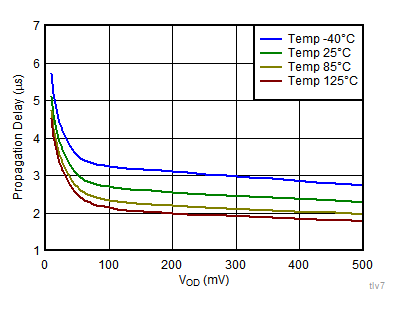
| VCC = 3.3 V to 5 V | TLV703x |
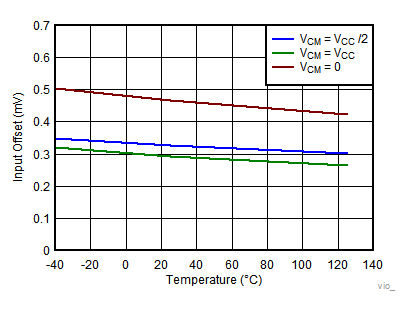
| VCC = 3.3 V |
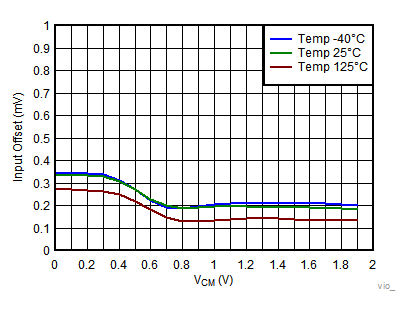
| VCC = 1.8 V |
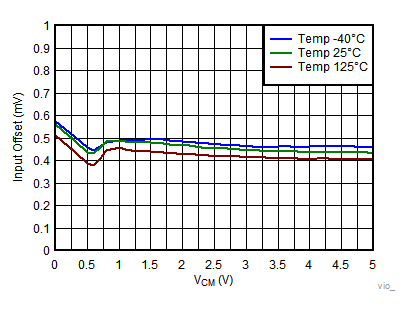
| VCC = 5 V |
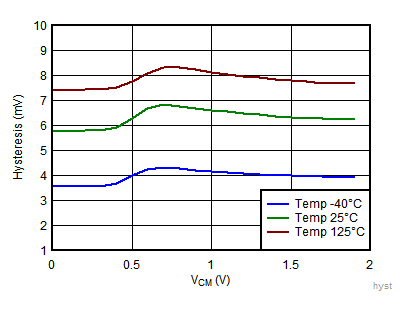
| VCC = 1.8 V | TLV70x1 |
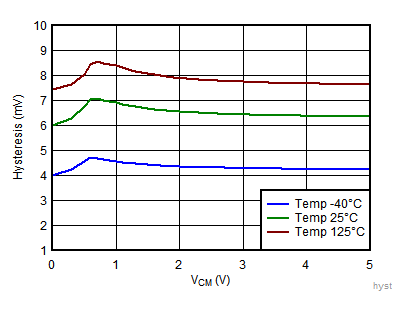
| VCC = 5 V | TLV70x1 |
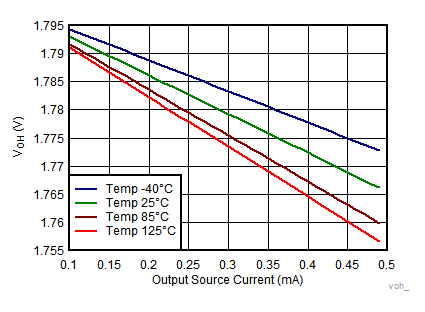
| VCC = 1.8 V | TLV703x |
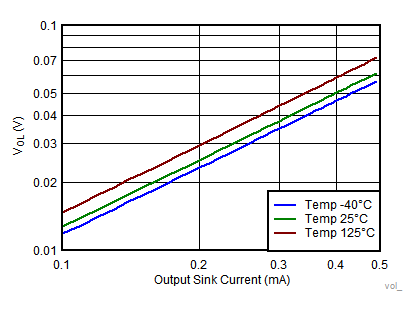
| VCC = 1.8 V |
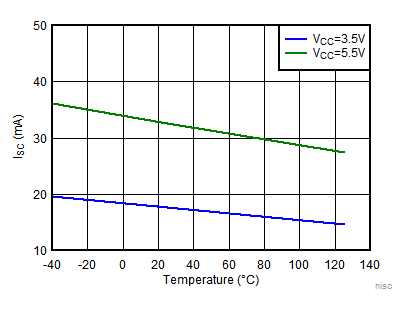
| VCM = VCC / 2 |
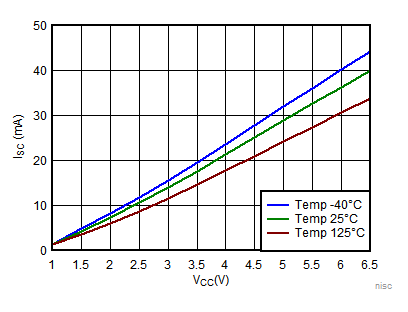
| VCM = VCC / 2 |
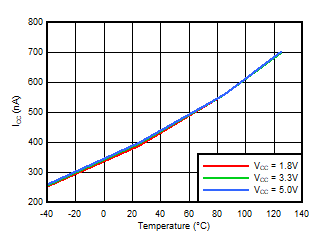
| VCM = VCC / 2 | TLV70x2 |
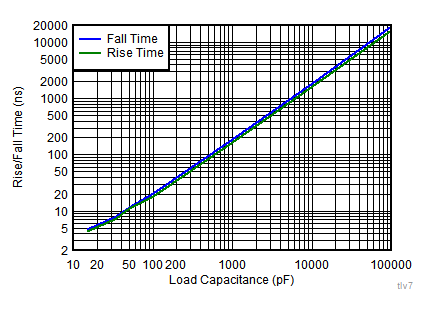
| VOD = 100 mV | TLV703x Rise only |
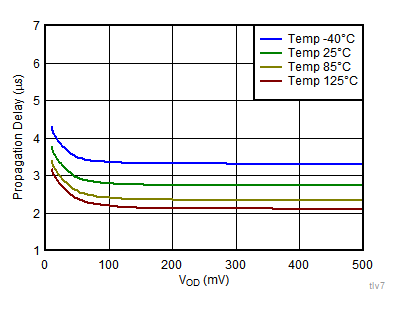
| VCC = 3.3 V to 5 V |